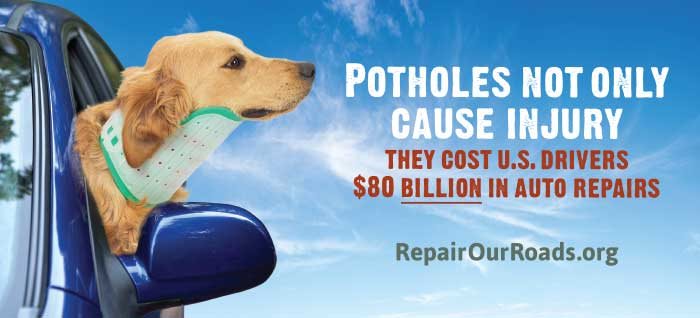Email media@liuna.org
Billboards, Radio Ads, Online Action and a Visit by the “Getting Schooled” in Infrastructure School Bus to Highlight Road and Bridge Safety Issues
Cincinnati (May 28, 2014) – As part of a nearly $1 million national ad and action campaign to press Congress to pass a long-term, full-investment Highway Bill, LIUNA will sponsor Cincinnati radio ads, online tools and billboards, including one unveiled today at the Brent Spence Bridge. 
The Highway Bill authorizes transportation investment through the national Highway Trust Fund. It provides the majority of resources for most states and localities to care for roads and bridges. The fund is expected to begin running dry this summer, and without Congressional action, will cease dispersing funds all-together on Oct. 1.
“For LIUNA, passage of a Highway Bill is about jobs, but, as with every American, it’s about ensuring the safety and reliability of our transportation systems,” LIUNA General President Terry O’Sullivan said. “Congress has viable, responsible options and they need to take action.”
The campaign includes ads and activities initially in Ohio, Pennsylvania and Michigan. In Ohio, the first digital billboard warns: “Federal inspectors deemed this bridge functionally obsolete. Enjoy your ride.” A second digital board states: “Be prepared when crossing this bridge” and displays a life preserver. Both refer to www.FixOurBridges.org, where messages can be sent to members of Congress.
The Brent Spence Bridge is a symbol of the deterioration of our nation’s surface transportation system. While elected officials are now debating how to bring it up to par, it has been structurally obsolete for about 29 years. Daily traffic is about twice capacity. The Cincinnati Enquirer called it one of the most “hazardous bridges in the nation,” noting that the crash rate on the bridge is five times that of the state’s overall highway system – and that the bridge itself cannot accommodate emergency vehicles.
The bridge is only one of about 6,800 obsolete or deficient bridges in Ohio and one of about 4,500 obsolete or deficient bridges in Kentucky.
The campaign will also highlight deteriorating road conditions, with billboards and radio ads focusing on potholes. According to the transportation research group, TRIP, poor road surfaces, such as potholes, contribute to a third of all traffic fatalities.
In June, the “Getting Schooled in Infrastructure” school bus will begin touring the U.S., with stops in Ohio. The bus has been crushed and depicts a large piece of concrete from a falling bridge. It will be towed to locations on the tour.
“We are not trying to scare people,” O’Sullivan said. “Much like the wrecked car many schools place in front of their buildings on prom night to warn of the consequences of drunk driving, America and Congress need to wake up to the risk and consequences of deteriorating and unsafe roads and bridges.”
Several proposals to address the road and bridge crisis are pending in Congress. They include a bi-partisan six-year Senate bill, a proposal to fill the gap with an incremental 15-cent gas tax increase that would stabilize the fund for 10 years, and a four-year proposal from the Department of Transportation.
While not popular, public opinion surveys consistently show strong support for increasing the gas tax so long as there are assurances the resources would be used to fix roads and bridges and make sure they are safe.
Said O’Sullivan, “There is no excuse for major bridges to remain structurally obsolete for decades. There is no excuse for traffic fatalities and injuries due to potholes and road deterioration. Congress must pass a long-term, full-investment Highway Bill and save the Highway Trust Fund.”
To view the billboards and hear the ads, go to http://fixourbridges.org/Materials.aspx.
###